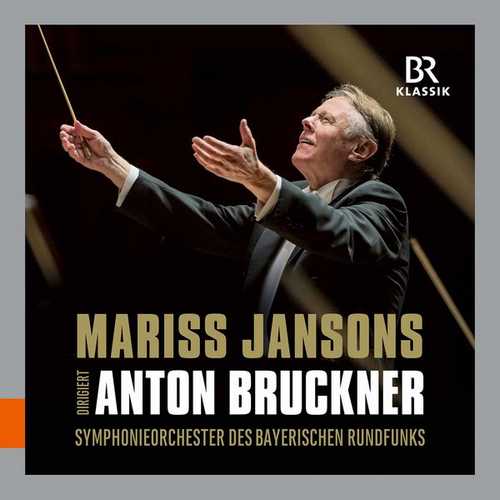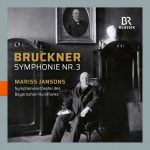
Composer: Anton Bruckner
Orchestra: Symphonie-Orchester des Bayerischen Rundfunks
Conductor: Mariss Jansons
Number of Discs: 6
Format: FLAC (tracks)
Label: BR Klassik
Catalogue: 900718
Release: 2020
Size: 1.55 GB
Recovery: +3%
Scan: yes
CD 01
Symphony No. 3 in D Minor, WAB 103 “Wagner” (1889 Version) (Live)
01. I. Mehr langsam. Misterioso
02. II. Adagio, bewegt, quasi andante
03. III. Ziemlich schnell
04. IV. Allegro
CD 02
Symphony No. 4 in Eb Major ‘Romantic’ (Live)
01. I. Allegro
02. II. Andante quasi allegretto
03. III. Scherzo. Sehr schnell
Symphony No. 4 in E-Flat Major, WAB 104 “Romantic” (1880 Version) (Live)
04. IV. Finale. Bewegt, doch nicht zu schnell
CD 03
Symphony No. 6 in A major (Live)
01. I. Majestoso
02. II. Adagio. Sehr feierlich
03. III. Scherzo. Nicht schnell – Trio. Langsam
04. IV. Finale. Bewegt, doch nicht zu schnell
CD 04
Symphony No. 7 in E Major (Live)
01. I. Allegro moderato
02. II. Adagio. Sehr feierlich und sehr langsam
03. III. Scherzo. Sehr schnell
04. IV. Finale. Bewegt, doch nicht schnell
CD 05
Symphony No. 8 in C Minor, WAB 108 “Die Apokalyptische” (1890 Version) (Live)
01. I. Allegro moderato
02. II. Scherzo. Allegro moderato – Trio. Langsam
03. III. Adagio
04. IV. Finale. Feierlich, nicht schnell
CD 06
Symphony No. 9 in D Minor (Live)
01. I. Feierlich, misterioso
02. II. Scherzo. Bewegt, lebhaft – Trio. Schnell
03. III. Adagio. Langsam feierlich
Anton Bruckner’s symphonies were a constant part of the repertoire for Mariss Jansons and the Symphonieorchester des Bayerischen Rundfunks. The existing recordings – almost all the great Bruckner symphonies – are important documents of Jansons’ deep understanding of the works, and the high musical quality of the recordings also testifies to the long Bruckner tradition at the BRSO. Jansons followed Bruckner’s notes and markings with painstaking precision, and listening to a recording with the score reveals again and again how closely the conductor studied these works with the musicians of his orchestra. Bruckner’s symphonies form the backbone of Late Romantic symphonic music. To a certain extent, Bruckner reinvented the symphony – something that not even Liszt or Wagner had dared to do in the wake of the groundbreaking masterpieces of Beethoven, which until then had been considered the culmination and conclusion of the genre.
It was Bruckner and, somewhat later, Brahms who sought and found new methods of reviving the symphonic genre and developing it further. In this regard, Bruckner’s approach was entirely new. From the outset, he relied on the sound of the large orchestra and, rather than mixing the individual groups of instruments, he tended to either separate them from each other or couple them together like organ registers (with which, as an organist, he was very familiar). Terraced dynamics, that is, the immediate juxtaposition of piano and forte without transition, was also something Bruckner derived from organ music. As a church musician, he had close contact with these and other elements of Baroque music, and they flowed into his symphonies. As far as dramaturgical development was concerned, he tended to favor Schubert; indeed, it was the organic continuation and alternating interconnection of themes Bruckner had learned from Schubert that also explains the unprecedented performance length of his symphonies.



